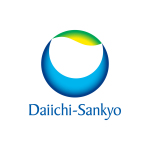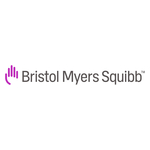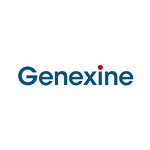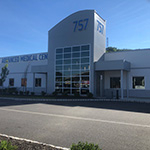Five-year overall survival rate of 19.4% and 18.4% for KEYTRUDA plus chemotherapy in KEYNOTE-189 and KEYNOTE-407, respectively
In first-line metastatic NSCLC, KEYTRUDA-based regimens have now shown a five-year survival benefit in four trials
RAHWAY, N.J. — (BUSINESS WIRE) — Merck (NYSE: MRK), known as MSD outside of the United States and Canada, today announced KEYTRUDA, Merck’s anti-PD-1 therapy, plus chemotherapy continued to demonstrate a survival benefit and durable responses in two five-year exploratory analyses of pivotal Phase 3 studies as first-line treatment for metastatic non-small cell lung cancer (NSCLC):

- For patients with metastatic nonsquamous NSCLC, data from KEYNOTE-189 demonstrated KEYTRUDA plus pemetrexed (ALIMTA®) and platinum chemotherapy (cisplatin or carboplatin) had a five-year overall survival (OS) rate of 19.4% versus 11.3% for chemotherapy alone. The KEYTRUDA-pemetrexed-platinum chemotherapy combination reduced the risk of death by 40% (HR=0.60 [95% CI, 0.50-0.72]). At five years, KEYTRUDA plus pemetrexed and cisplatin or carboplatin more than doubled the median OS compared to chemotherapy alone (22.0 months versus 10.6 months);
- For patients with metastatic squamous NSCLC, results from KEYNOTE-407 showed the five-year OS rate for KEYTRUDA plus carboplatin-paclitaxel or nab-paclitaxel was 18.4% versus 9.7% for chemotherapy alone. KEYTRUDA plus carboplatin-paclitaxel or nab-paclitaxel reduced the risk of death by 29% (HR=0.71 [95% CI, 0.59-0.85]) versus chemotherapy alone. The median OS was 17.2 months for the KEYTRUDA plus chemotherapy group versus 11.6 months for the chemotherapy group.
KEYTRUDA is the first immunotherapy to demonstrate a sustained five-year survival benefit both in combination with chemotherapy and as monotherapy for the first-line treatment of NSCLC. In addition to NSCLC, five-year survival data for KEYTRUDA have been presented in three other types of cancer, including bladder cancer (KEYNOTE-045), head and neck cancer (KEYNOTE-048) and melanoma (KEYNOTE-054).
“The overall survival findings from KEYNOTE-189 and KEYNOTE-407 changed the way patients with metastatic non-small cell lung cancer were treated and established KEYTRUDA plus chemotherapy as a foundational first-line treatment for this devastating disease,” said Dr. Eliav Barr, senior vice president, head of global clinical development and chief medical officer, Merck Research Laboratories. “Now, with more than five years of follow-up, these studies continue to show impressive survival outcomes and durable responses for patients receiving KEYTRUDA in combination with chemotherapy. In fact, in both studies, of the approximately 55 patients who completed two years of treatment, about 70% were alive at five years.”
“Prior to these landmark studies, lung cancer had a 10% five-year survival rate, one of the lowest of any cancer,” said Dr. Marina C. Garassino, professor of medicine, University of Chicago, Hematology/Oncology, and principal investigator for KEYNOTE-189. “These results show meaningful improvements in five-year survival for patients receiving KEYTRUDA plus chemotherapy and reinforce the important role of these KEYTRUDA-based regimens as standards of care for metastatic non-small cell lung cancer.”
Results from KEYNOTE-189 (abstract #973MO) and KEYNOTE-407 (abstract #974MO) are being presented during a mini oral session at the European Society for Medical Oncology (ESMO) Congress 2022. Five-year OS data from KEYNOTE-024, which evaluated KEYTRUDA monotherapy versus chemotherapy for the first-line treatment of patients with metastatic NSCLC whose tumors expressed PD-L1 (tumor proportion score [TPS] ≥50%), were presented at ESMO 2020. Five-year OS data from KEYNOTE-042, which evaluated KEYTRUDA monotherapy versus platinum-based chemotherapy for the first-line treatment of patients with metastatic NSCLC whose tumors expressed PD-L1 (TPS ≥1%), were presented at SITC 2021.
As announced, data spanning more than 16 different types of cancer are being presented from Merck’s broad oncology portfolio and investigational pipeline at ESMO Congress 2022.
Five-year data from an exploratory analysis of KEYNOTE-189 in metastatic nonsquamous NSCLC (abstract #973MO)
KEYNOTE-189 (ClinicalTrials.gov, NCT02578680) is a pivotal Phase 3, randomized trial evaluating KEYTRUDA plus pemetrexed and cisplatin or carboplatin for the first-line treatment of patients with metastatic nonsquamous NSCLC with no EGFR or ALK genomic tumor aberrations versus pemetrexed and platinum chemotherapy alone. Results being presented at ESMO include an exploratory analysis of the efficacy and safety outcomes at five years of follow-up and additional analyses in patients who completed 35 cycles (approximately two years) of treatment with KEYTRUDA.
With a median follow-up of 64.6 months (range, 60.1 to 72.4), KEYTRUDA plus pemetrexed and cisplatin or carboplatin continued to show improvement in OS and progression-free survival (PFS). The OS benefit was observed despite a 57.3% (n=118/206) effective crossover rate from chemotherapy to subsequent anti-PD-1/PD-L1 therapy. The KEYTRUDA-pemetrexed-platinum chemotherapy combination reduced the risk of disease progression or death by half (HR=0.50 [95% CI, 0.42-0.60]) versus chemotherapy alone, with a median PFS of 9.0 months versus 4.9 months and a five-year PFS rate of 7.5% versus 0.6%. The objective response rate (ORR) was 48.3% for those receiving KEYTRUDA plus pemetrexed and cisplatin or carboplatin versus 19.9% for those receiving chemotherapy alone, with a median duration of response (DOR) of 12.7 months (range, 1.1+ to 68.3+) versus 7.1 months (range, 2.4 to 31.5), respectively.
Of the patients who completed approximately two years of treatment (35 cycles) with KEYTRUDA plus pemetrexed and cisplatin or carboplatin (n=57/405), 71.9% were alive at five years following randomization, with an ORR of 86.0% (with eight complete responses and 41 partial responses). Among these patients, 40.4% were alive without progressive disease or subsequent therapy.
No new safety signals for KEYTRUDA were identified with long-term follow-up. Among all patients treated, 72.8% of those who received KEYTRUDA plus pemetrexed and cisplatin or carboplatin and 67.3% of those who received chemotherapy alone experienced Grade 3-5 adverse events (AEs). Among patients who completed two years of treatment with KEYTRUDA plus pemetrexed and cisplatin or carboplatin, Grade 3-5 AEs occurred in 66.7%.
KEYNOTE-189 was conducted in collaboration with Eli Lilly and Company, the makers of ALIMTA® (pemetrexed).
Five-year data from an exploratory analysis of KEYNOTE-407 in metastatic squamous NSCLC (abstract #974MO)
KEYNOTE-407 (ClinicalTrials.gov, NCT02775435) is a pivotal Phase 3, randomized, double-blind, placebo-controlled trial evaluating KEYTRUDA plus carboplatin-paclitaxel or nab-paclitaxel for the first-line treatment of patients with metastatic squamous NSCLC versus carboplatin-paclitaxel or nab-paclitaxel alone. Results being presented at ESMO include an exploratory analysis of the efficacy and safety outcomes at five years of follow-up and additional analyses in patients who completed 35 cycles (approximately two years) of treatment with KEYTRUDA.
With a median follow-up of 56.9 months (range, 49.9 to 66.2), KEYTRUDA plus carboplatin-paclitaxel or nab-paclitaxel continued to show improvement in OS and PFS. The OS benefit was observed despite a 50.9% (n=143/281) effective crossover rate from chemotherapy to subsequent anti-PD-1/PD-L1 therapy. KEYTRUDA plus carboplatin-paclitaxel or nab-paclitaxel reduced the risk of disease progression or death by 38% (HR=0.62 [95% CI, 0.52-0.74]) versus chemotherapy alone, with a median PFS of 8.0 months versus 5.1 months and a five-year PFS rate of 10.8% versus 3.5%. The ORR was 62.2% for the KEYTRUDA combination arm versus 38.8% for the chemotherapy arm.
Of the patients who completed two years (35 cycles) of treatment with KEYTRUDA plus carboplatin-paclitaxel or nab-paclitaxel (n=55/278), 69.5% were alive at five years, with an ORR of 90.9% (with nine complete responses and 41 partial responses). Among these patients, 43.6% were alive without progressive disease or subsequent therapy.
No new safety signals for KEYTRUDA were identified with long-term follow-up. Among all patients treated, 74.8% of those who received KEYTRUDA plus carboplatin-paclitaxel or nab-paclitaxel and 70.0% of those who received chemotherapy alone experienced Grade 3-5 AEs. Among patients who completed two years of treatment with KEYTRUDA plus carboplatin-paclitaxel or nab-paclitaxel, Grade 3-5 AEs occurred in 63.6%.
About lung cancer
Lung cancer is the leading cause of cancer death worldwide. In 2020 alone, there were more than 2.2 million new cases and 1.8 million deaths from lung cancer globally. Non-small cell lung cancer is the most common type of lung cancer, accounting for about 82% of all cases. In the U.S., the overall five-year survival rate for patients diagnosed with lung cancer is 24%, which is a 14% improvement over the last five years. Improved survival rates are due in part to earlier detection and screening, reduction in smoking, advances in diagnostic and surgical procedures as well as the introduction of new therapies.
About Merck’s research in lung cancer
Merck is advancing research aimed at transforming the way lung cancer is treated, with a goal of improving outcomes for patients affected by this deadly disease. Through nearly 200 clinical trials evaluating more than 36,000 patients around the world, Merck is at the forefront of lung cancer research. In advanced NSCLC, KEYTRUDA has four approved U.S. indications (see indications below) and is approved for advanced NSCLC in more than 95 countries. Among Merck’s research efforts are trials focused on evaluating KEYTRUDA in earlier stages of lung cancer as well as identifying new combinations and coformulations with KEYTRUDA.
About KEYTRUDA® (pembrolizumab) injection, 100 mg
KEYTRUDA is an anti-programmed death receptor-1 (PD-1) therapy that works by increasing the ability of the body’s immune system to help detect and fight tumor cells. KEYTRUDA is a humanized monoclonal antibody that blocks the interaction between PD-1 and its ligands, PD-L1 and PD-L2, thereby activating T lymphocytes which may affect both tumor cells and healthy cells.
Merck has the industry’s largest immuno-oncology clinical research program. There are currently more than 1,600 trials studying KEYTRUDA across a wide variety of cancers and treatment settings. The KEYTRUDA clinical program seeks to understand the role of KEYTRUDA across cancers and the factors that may predict a patient’s likelihood of benefitting from treatment with KEYTRUDA, including exploring several different biomarkers.
Selected KEYTRUDA® (pembrolizumab) Indications in the U.S.
Non-Small Cell Lung Cancer
KEYTRUDA, in combination with pemetrexed and platinum chemotherapy, is indicated for the first-line treatment of patients with metastatic nonsquamous non-small cell lung cancer (NSCLC), with no EGFR or ALK genomic tumor aberrations.
KEYTRUDA, in combination with carboplatin and either paclitaxel or paclitaxel protein-bound, is indicated for the first-line treatment of patients with metastatic squamous NSCLC.
KEYTRUDA, as a single agent, is indicated for the first-line treatment of patients with NSCLC expressing PD-L1 [tumor proportion score (TPS) ≥1%] as determined by an FDA-approved test, with no EGFR or ALK genomic tumor aberrations, and is:
- stage III where patients are not candidates for surgical resection or definitive chemoradiation, or
- metastatic.
KEYTRUDA, as a single agent, is indicated for the treatment of patients with metastatic NSCLC whose tumors express PD-L1 (TPS ≥1%) as determined by an FDA-approved test, with disease progression on or after platinum-containing chemotherapy. Patients with EGFR or ALK genomic tumor aberrations should have disease progression on FDA-approved therapy for these aberrations prior to receiving KEYTRUDA.
See additional selected indications for KEYTRUDA in the U.S. after the Selected Important Safety Information
Selected Important Safety Information for KEYTRUDA
Severe and Fatal Immune-Mediated Adverse Reactions
KEYTRUDA is a monoclonal antibody that belongs to a class of drugs that bind to either the PD-1 or the PD-L1, blocking the PD-1/PD-L1 pathway, thereby removing inhibition of the immune response, potentially breaking peripheral tolerance and inducing immune-mediated adverse reactions. Immune-mediated adverse reactions, which may be severe or fatal, can occur in any organ system or tissue, can affect more than one body system simultaneously, and can occur at any time after starting treatment or after discontinuation of treatment. Important immune-mediated adverse reactions listed here may not include all possible severe and fatal immune-mediated adverse reactions.
Monitor patients closely for symptoms and signs that may be clinical manifestations of underlying immune-mediated adverse reactions. Early identification and management are essential to ensure safe use of anti–PD-1/PD-L1 treatments. Evaluate liver enzymes, creatinine, and thyroid function at baseline and periodically during treatment. For patients with TNBC treated with KEYTRUDA in the neoadjuvant setting, monitor blood cortisol at baseline, prior to surgery, and as clinically indicated. In cases of suspected immune-mediated adverse reactions, initiate appropriate workup to exclude alternative etiologies, including infection. Institute medical management promptly, including specialty consultation as appropriate.
Withhold or permanently discontinue KEYTRUDA depending on severity of the immune-mediated adverse reaction. In general, if KEYTRUDA requires interruption or discontinuation, administer systemic corticosteroid therapy (1 to 2 mg/kg/day prednisone or equivalent) until improvement to Grade 1 or less. Upon improvement to Grade 1 or less, initiate corticosteroid taper and continue to taper over at least 1 month. Consider administration of other systemic immunosuppressants in patients whose adverse reactions are not controlled with corticosteroid therapy.
Immune-Mediated Pneumonitis
KEYTRUDA can cause immune-mediated pneumonitis. The incidence is higher in patients who have received prior thoracic radiation. Immune-mediated pneumonitis occurred in 3.4% (94/2799) of patients receiving KEYTRUDA, including fatal (0.1%), Grade 4 (0.3%), Grade 3 (0.9%), and Grade 2 (1.3%) reactions. Systemic corticosteroids were required in 67% (63/94) of patients. Pneumonitis led to permanent discontinuation of KEYTRUDA in 1.3% (36) and withholding in 0.9% (26) of patients. All patients who were withheld reinitiated KEYTRUDA after symptom improvement; of these, 23% had recurrence. Pneumonitis resolved in 59% of the 94 patients.
Pneumonitis occurred in 8% (31/389) of adult patients with cHL receiving KEYTRUDA as a single agent, including Grades 3-4 in 2.3% of patients. Patients received high-dose corticosteroids for a median duration of 10 days (range: 2 days to 53 months). Pneumonitis rates were similar in patients with and without prior thoracic radiation. Pneumonitis led to discontinuation of KEYTRUDA in 5.4% (21) of patients. Of the patients who developed pneumonitis, 42% interrupted KEYTRUDA, 68% discontinued KEYTRUDA, and 77% had resolution.
Immune-Mediated Colitis
KEYTRUDA can cause immune-mediated colitis, which may present with diarrhea. Cytomegalovirus infection/reactivation has been reported in patients with corticosteroid-refractory immune-mediated colitis. In cases of corticosteroid-refractory colitis, consider repeating infectious workup to exclude alternative etiologies. Immune-mediated colitis occurred in 1.7% (48/2799) of patients receiving KEYTRUDA, including Grade 4 (<0.1%), Grade 3 (1.1%), and Grade 2 (0.4%) reactions. Systemic corticosteroids were required in 69% (33/48); additional immunosuppressant therapy was required in 4.2% of patients. Colitis led to permanent discontinuation of KEYTRUDA in 0.5% (15) and withholding in 0.5% (13) of patients. All patients who were withheld reinitiated KEYTRUDA after symptom improvement; of these, 23% had recurrence. Colitis resolved in 85% of the 48 patients.
Hepatotoxicity and Immune-Mediated Hepatitis
KEYTRUDA as a Single Agent
KEYTRUDA can cause immune-mediated hepatitis. Immune-mediated hepatitis occurred in 0.7% (19/2799) of patients receiving KEYTRUDA, including Grade 4 (<0.1%), Grade 3 (0.4%), and Grade 2 (0.1%) reactions. Systemic corticosteroids were required in 68% (13/19) of patients; additional immunosuppressant therapy was required in 11% of patients. Hepatitis led to permanent discontinuation of KEYTRUDA in 0.2% (6) and withholding in 0.3% (9) of patients. All patients who were withheld reinitiated KEYTRUDA after symptom improvement; of these, none had recurrence. Hepatitis resolved in 79% of the 19 patients.
KEYTRUDA With Axitinib
KEYTRUDA in combination with axitinib can cause hepatic toxicity. Monitor liver enzymes before initiation of and periodically throughout treatment. Consider monitoring more frequently as compared to when the drugs are administered as single agents. For elevated liver enzymes, interrupt KEYTRUDA and axitinib, and consider administering corticosteroids as needed. With the combination of KEYTRUDA and axitinib, Grades 3 and 4 increased alanine aminotransferase (ALT) (20%) and increased aspartate aminotransferase (AST) (13%) were seen at a higher frequency compared to KEYTRUDA alone. Fifty-nine percent of the patients with increased ALT received systemic corticosteroids. In patients with ALT ≥3 times upper limit of normal (ULN) (Grades 2-4, n=116), ALT resolved to Grades 0-1 in 94%. Among the 92 patients who were rechallenged with either KEYTRUDA (n=3) or axitinib (n=34) administered as a single agent or with both (n=55), recurrence of ALT ≥3 times ULN was observed in 1 patient receiving KEYTRUDA, 16 patients receiving axitinib, and 24 patients receiving both. All patients with a recurrence of ALT ≥3 ULN subsequently recovered from the event.
Immune-Mediated Endocrinopathies
Adrenal Insufficiency
KEYTRUDA can cause primary or secondary adrenal insufficiency. For Grade 2 or higher, initiate symptomatic treatment, including hormone replacement as clinically indicated. Withhold KEYTRUDA depending on severity. Adrenal insufficiency occurred in 0.8% (22/2799) of patients receiving KEYTRUDA, including Grade 4 (<0.1%), Grade 3 (0.3%), and Grade 2 (0.3%) reactions. Systemic corticosteroids were required in 77% (17/22) of patients; of these, the majority remained on systemic corticosteroids. Adrenal insufficiency led to permanent discontinuation of KEYTRUDA in <0.1% (1) and withholding in 0.3% (8) of patients. All patients who were withheld reinitiated KEYTRUDA after symptom improvement.
Hypophysitis
KEYTRUDA can cause immune-mediated hypophysitis. Hypophysitis can present with acute symptoms associated with mass effect such as headache, photophobia, or visual field defects. Hypophysitis can cause hypopituitarism. Initiate hormone replacement as indicated. Withhold or permanently discontinue KEYTRUDA depending on severity. Hypophysitis occurred in 0.6% (17/2799) of patients receiving KEYTRUDA, including Grade 4 (<0.1%), Grade 3 (0.3%), and Grade 2 (0.2%) reactions. Systemic corticosteroids were required in 94% (16/17) of patients; of these, the majority remained on systemic corticosteroids. Hypophysitis led to permanent discontinuation of KEYTRUDA in 0.1% (4) and withholding in 0.3% (7) of patients. All patients who were withheld reinitiated KEYTRUDA after symptom improvement.
Thyroid Disorders
KEYTRUDA can cause immune-mediated thyroid disorders. Thyroiditis can present with or without endocrinopathy. Hypothyroidism can follow hyperthyroidism. Initiate hormone replacement for hypothyroidism or institute medical management of hyperthyroidism as clinically indicated. Withhold or permanently discontinue KEYTRUDA depending on severity. Thyroiditis occurred in 0.6% (16/2799) of patients receiving KEYTRUDA, including Grade 2 (0.3%). None discontinued, but KEYTRUDA was withheld in <0.1% (1) of patients.
Hyperthyroidism occurred in 3.4% (96/2799) of patients receiving KEYTRUDA, including Grade 3 (0.1%) and Grade 2 (0.8%). It led to permanent discontinuation of KEYTRUDA in <0.1% (2) and withholding in 0.3% (7) of patients. All patients who were withheld reinitiated KEYTRUDA after symptom improvement. Hypothyroidism occurred in 8% (237/2799) of patients receiving KEYTRUDA, including Grade 3 (0.1%) and Grade 2 (6.2%). It led to permanent discontinuation of KEYTRUDA in <0.1% (1) and withholding in 0.5% (14) of patients. All patients who were withheld reinitiated KEYTRUDA after symptom improvement. The majority of patients with hypothyroidism required long-term thyroid hormone replacement. The incidence of new or worsening hypothyroidism was higher in 1185 patients with HNSCC, occurring in 16% of patients receiving KEYTRUDA as a single agent or in combination with platinum and FU, including Grade 3 (0.3%) hypothyroidism. The incidence of new or worsening hypothyroidism was higher in 389 adult patients with cHL (17%) receiving KEYTRUDA as a single agent, including Grade 1 (6.2%) and Grade 2 (10.8%) hypothyroidism.
Type 1 Diabetes Mellitus (DM), Which Can Present With Diabetic Ketoacidosis
Monitor patients for hyperglycemia or other signs and symptoms of diabetes. Initiate treatment with insulin as clinically indicated. Withhold KEYTRUDA depending on severity. Type 1 DM occurred in 0.2% (6/2799) of patients receiving KEYTRUDA. It led to permanent discontinuation in <0.1% (1) and withholding of KEYTRUDA in <0.1% (1) of patients. All patients who were withheld reinitiated KEYTRUDA after symptom improvement.
Immune-Mediated Nephritis With Renal Dysfunction
KEYTRUDA can cause immune-mediated nephritis. Immune-mediated nephritis occurred in 0.3% (9/2799) of patients receiving KEYTRUDA, including Grade 4 (<0.1%), Grade 3 (0.1%), and Grade 2 (0.1%) reactions. Systemic corticosteroids were required in 89% (8/9) of patients. Nephritis led to permanent discontinuation of KEYTRUDA in 0.1% (3) and withholding in 0.1% (3) of patients. All patients who were withheld reinitiated KEYTRUDA after symptom improvement; of these, none had recurrence. Nephritis resolved in 56% of the 9 patients.
Immune-Mediated Dermatologic Adverse Reactions
KEYTRUDA can cause immune-mediated rash or dermatitis. Exfoliative dermatitis, including Stevens-Johnson syndrome, drug rash with eosinophilia and systemic symptoms, and toxic epidermal necrolysis, has occurred with anti–PD-1/PD-L1 treatments. Topical emollients and/or topical corticosteroids may be adequate to treat mild to moderate nonexfoliative rashes. Withhold or permanently discontinue KEYTRUDA depending on severity. Immune-mediated dermatologic adverse reactions occurred in 1.4% (38/2799) of patients receiving KEYTRUDA, including Grade 3 (1%) and Grade 2 (0.1%) reactions. Systemic corticosteroids were required in 40% (15/38) of patients.
Contacts
Media Contacts:
Melissa Moody
(215) 407-3536
Nikki Sullivan
(908) 644-0730
Investor Contacts:
Peter Dannenbaum
(908) 740-1037
Damini Chokshi
(908) 740-1807
Read full story here











